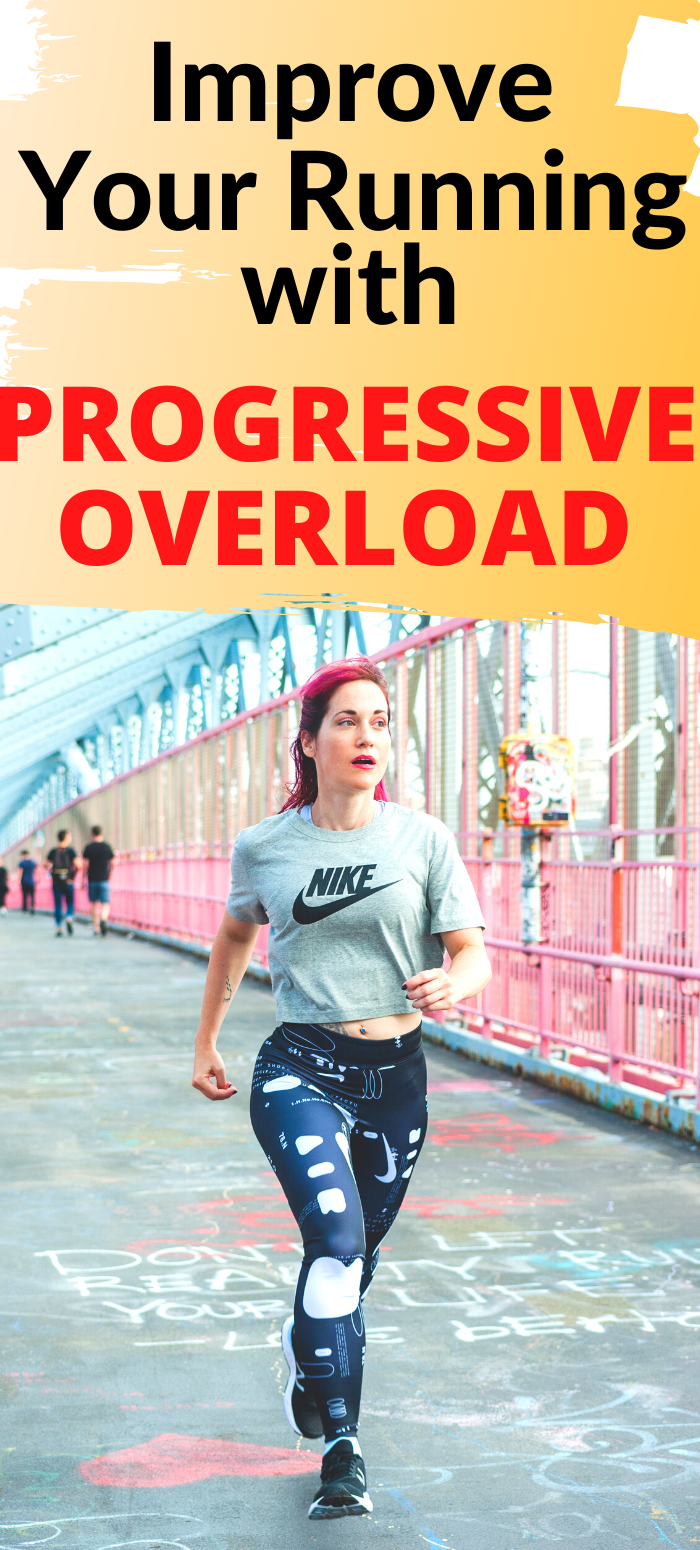How Progressive Overload Can Improve Your Running
Progressive overload is a training principle that can make the difference between being stuck in a fitness rut and crushing your running goals.
What Is Progressive Overload and How Can It Help Your Running?
By Marnie Kunz, CPT
Progressive overload can help you become a better runner while also reducing your chances of running injuries. Have you been working hard at your running program but can’t seem to get any faster or lose weight? You’ve hit a workout plateau — a common problem for many runners. Whether you’re a beginning runner or a seasoned fitness buff, you can get stuck in a rut. But the training principle of progressive overload can help you break through your running rut.
Break Through Your Running Plateau
Progressive overload can make you a better runner. Photo by Marques Jackson Photography.
People are creatures of habit, and it’s easy for runners to slide into a comfortable running routine with the same training speeds and distances. Running 3 miles a day at 10-minute mile pace may have helped you lose weight and get ready for a 5K race, for instance, but what happens when you want to step it up and run a 10K, train for a marathon or get more toned? Progressive overload to the rescue!
What is Progressive Overload?
Progressive overload is a training technique that gradually puts more stress on your body during workouts, helping prepare you for higher levels of performance. Incorporating progressive overload into your running training can help you reach new heights with your running, giving you better results than you’ve ever had before.
According to the National Academy of Sports Medicine, the Principle of Progression states that you can increase your time, weight, or intensity when training by 10% or less each week to allow for a gradual adaptation while minimizing your risk of injury.
For runners, this means you can add no more than 10% more miles or 10% more time to your training each week. For instance, if you run 20 miles one week, to continue building endurance, you can add up to 10% more miles, which would be 2 miles, the following week.
Progressive overload helps your body stay challenged as you train and make progress while also cutting down on your risk of getting injured.
I have met quite a few runners who wind up with injuries because they missed a lot of workouts or got super pumped for a new training goal and then went out and ran up to 50% more miles from the week before. This is almost always a recipe for injury.
By following the 10% rule, you can become a stronger, faster runner without sacrificing your health.
Benefits of Progressive Overload
There are many benefits of adding progressive overload to your running program. Whether you want to get faster, lose weight or reduce your risk of injuries, progressive overload will help. Some of the benefits of progressive overload include:
Improves your cardio fitness level. Training that pushes you to exert more effort will improve your overall fitness level.
Reduces your risk of running injuries. Since progressive overload is a gradual process, you will cut down on your risk of injuries. One of the most common causes of injuries is overuse - doing too much too fast in training. Progressive overload ensures you add intensity and duration gradually so you’re less likely to get hurt.
Improves speed and strength. If you are a runner, training with the principle of progressive overload will help you become faster and cut your race times. If you use progressive overload for your strength training program as well, you will also improve your strength.
How to Use Progressive Overload in Your Running
Progressive overload reduces your risk of injuries. Photo by Marques Jackson Photography.
First, sit down and assess your running goals. You may want to get your fastest 5K time, run your first marathon or lose weight with a running and strength training program. Or maybe you just want to get faster in general. Once you know your main goal, you can make progressive overload work for you and add distance and intensity to your training runs.
Here’s how to use progressive overload in your running program:
Add duration to your runs.
If you’re training for a long-distance race, for instance, add a long run to your weekly training plan. Gradually add mileage to your long run each week, following the 10% principle.
Add intensity to your workouts.
Speed workouts and hill workouts can increase your muscle strength, speed and improve your race performance. Add intensity to two of your workouts per week with speed training workouts. You can do intervals, tempo runs, hill workouts, or fartleks.
Schedule recovery days.
Follow a long run, speed workout, or hill workout with an easy run or rest day. Alternating easy and hard days allows your body time to recover and rebuild after the stress of a hard workout. If you do only hard workouts, your body will eventually break down and you will be more prone to injury and burnout.
Strength train.
Do circuit training, weightlifting, or resistance training exercises — such as squats, push-ups, and planks — to increase your lean muscle tissue. Stronger muscles will help you run faster and better prepare your body to meet the challenges of harder workouts. When you do strength training workouts, follow the 10% principle and add no more than 10% more weights to your exercises than the week before. See the 15 Best Strength Training Exercises for Runners for strength training ideas.
Whether you’re training for your goal race or just want to hit higher fitness and running levels, progressive overload is important when planning your running program. If you need help with a running plan, head over to our Training Center and I can design a personalized training program for you using progressive overload. 👋
Do you use progressive overload in your training? Tag Runstreet on Instagram if you try progressive overload in your training so we can cheer you on. Happy running to you!😊
Related Posts: 3 Track Workouts to Improve Your Race Times, How to Do Tabata Running Workouts, 20 Ways to Become a Better Runner
Marnie Kunz is a NASM-certified trainer and USATF- and RRCA-certified running coach, dog lover, Akita mom, and writer based in Brooklyn, NY.



